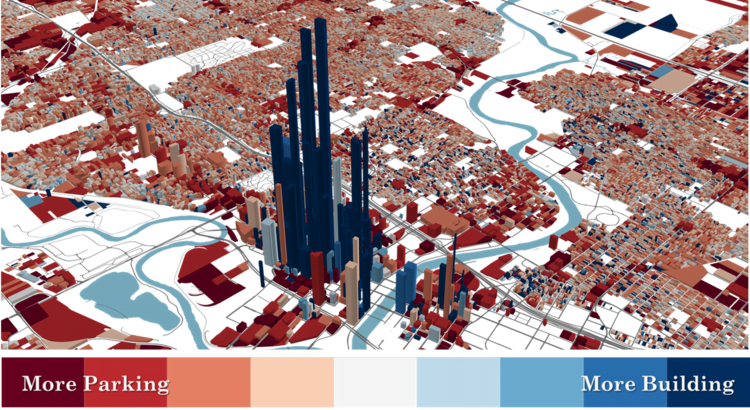
For this past Thanksgiving I wrote a post for Strong Towns about how pavement dilutes tax production. I decided to do the math and look at exactly how much parking we really have. What I find shocking is the extent to which our cities are built for our cars. Douglas Adams comments on this reality in his fantastic story The Hitchhiker’s Guide to the Galaxy. One of the main characters, an alien, “skimps on his research” before visiting Earth and mistakenly takes the name of a British car model believing cars to be the planet’s dominant life-form.
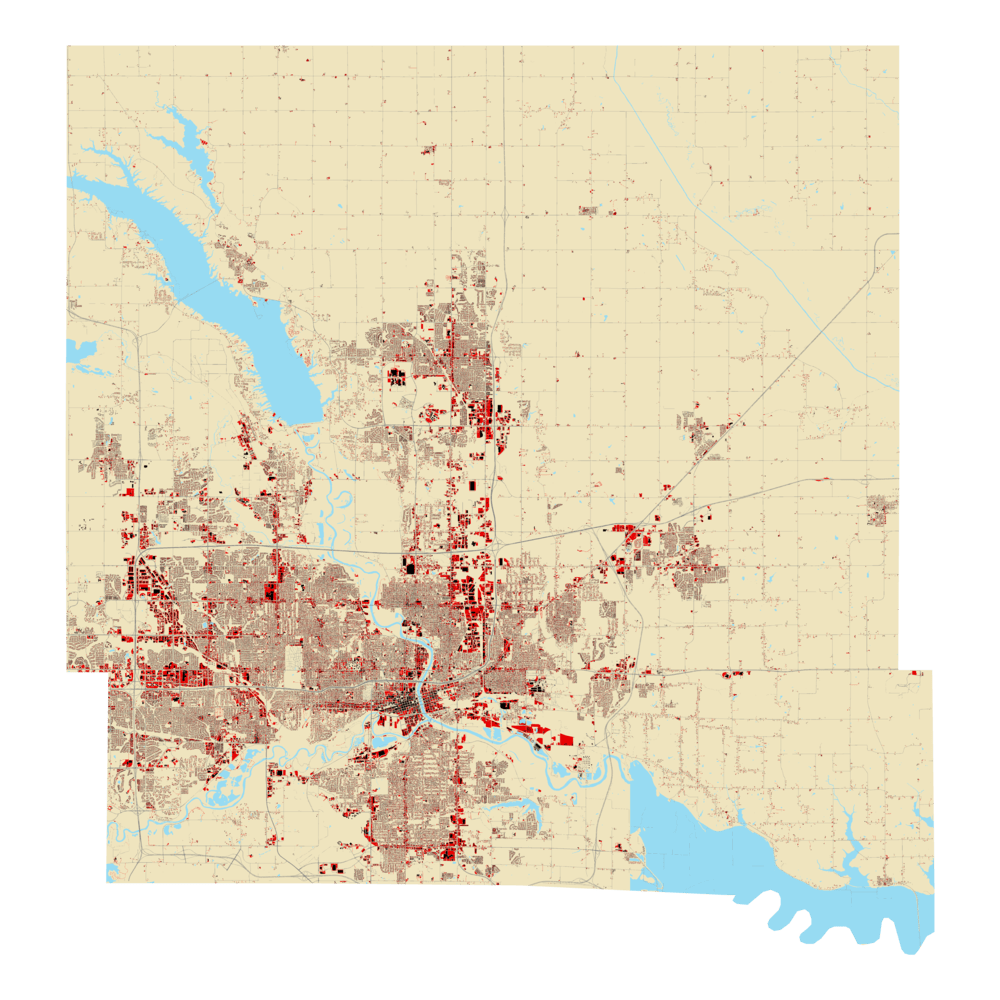
As an outside observer, though, how hard would it really be to make such a mistake? Let’s look at the overall composition of buildings and parking. Take a moment and guess how much parking America has versus how much actual building space. What seems like an appropriate ratio? 1:2? 1:1? 2:1?
Des Moines (Polk County) has about 11,628 acres of surface parking or 18 square miles. While that is an unsettling number, Des Moines is a big place. We can learn more from the overall proportion of parking to buildings. The footprints of its buildings take up about 17 square miles of land. In other words there’s about 9% more parking lot than building. The ratio is about one to one.
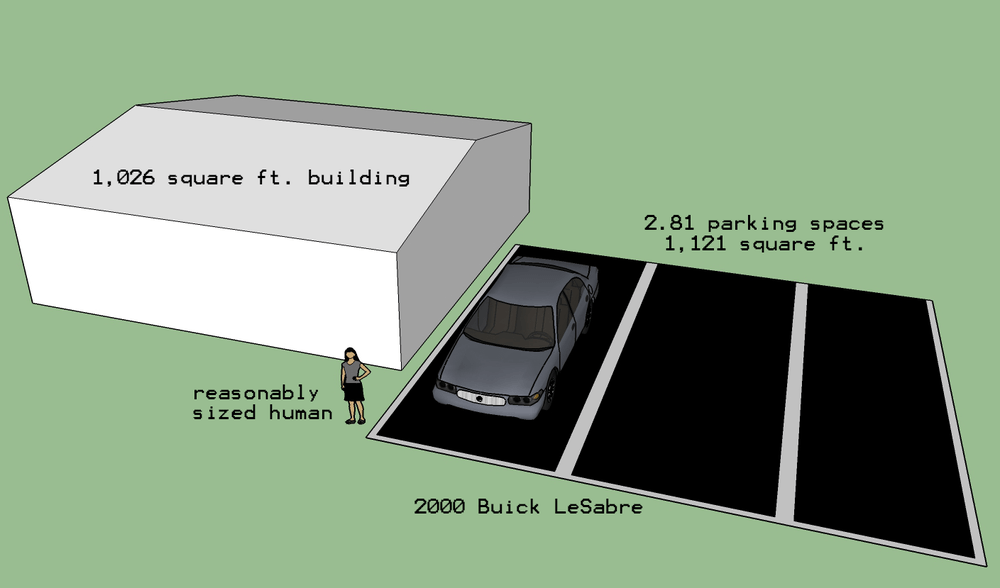
Granted this doesn’t take into account the multiple stories a building can have but it seems like a system out of balance. Polk County has 451,677 people and 18 square miles of parking. That works out to roughly 1.3 million parking or about 2.81 parking spaces per resident. With about 1,000 square feet of building for each person we can start to see a snapshot of the average person’s life.
Some of this can be accounted for by all of the other things that show up as parking like vacant lots and industrial sites. Most of it though has to do with our collective attitudes about convenience and the scale and dominance of auto-centric development. We expect to have one place for our cars to rest at night while we’re asleep, another while we’re busy at work, and the vague possibility of another while we shop. And we expect every man woman and child to own a vehicle. It’s also an unsurprising result. This proportion seems to hold true for all typical American cities. A full 14% of ALL land in Los Angeles County is devoted to parking.
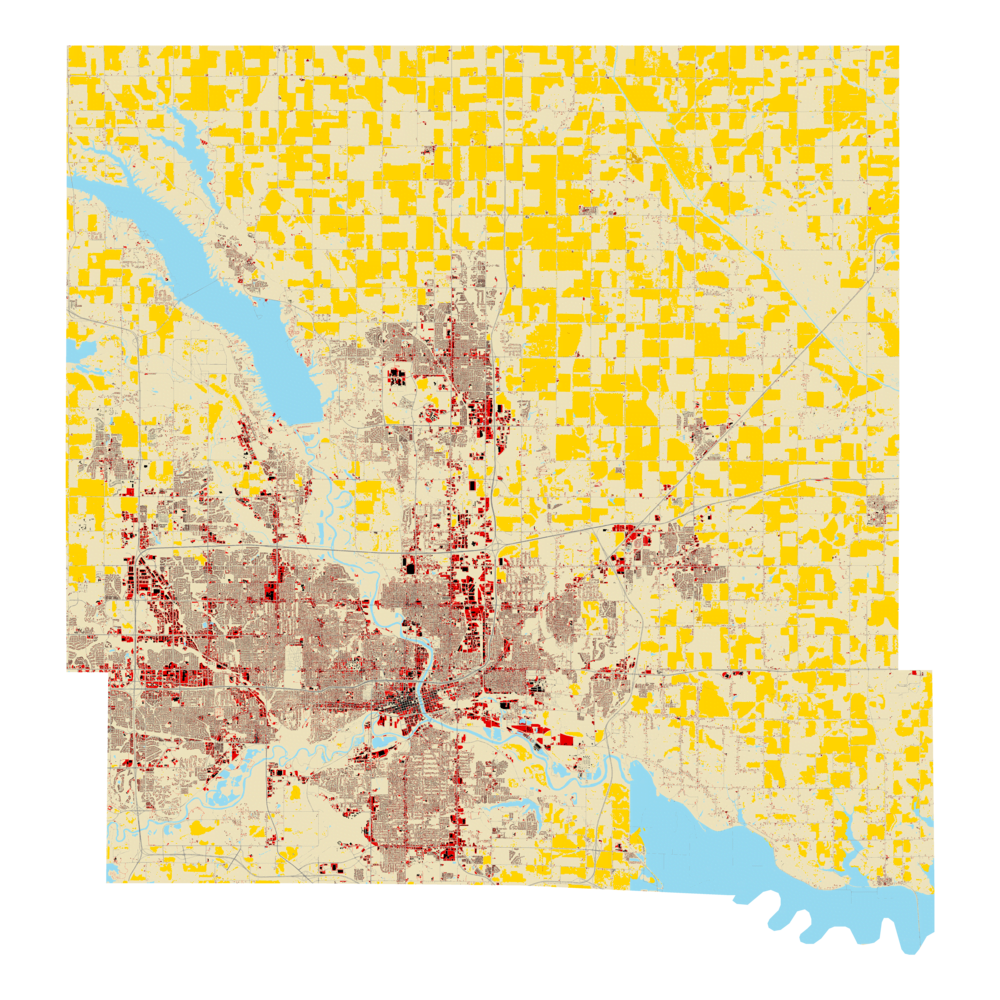
Part of the reason we waste so much space is that it’s easy to think of it as limitless. Parking, buildings, and roads each take up just 3% of the county’s total area respectively. The vast majority of the land is accounted for by other things. Some of it is water. A lot is backyards and small in-between spaces we don’t often think of like the grassy frontages around office parks. Most of it is corn. This Des Moines after all. Just because we can turn corn fields into development doesn’t guarantee we’ll have the resources to maintain it though. When we choose to, we must be strategic about what we can responsibly maintain. The more we choose to do so, each person takes on a little more liability. It’s no small wonder than Iowa is planning to scale back its existing infrastructure.
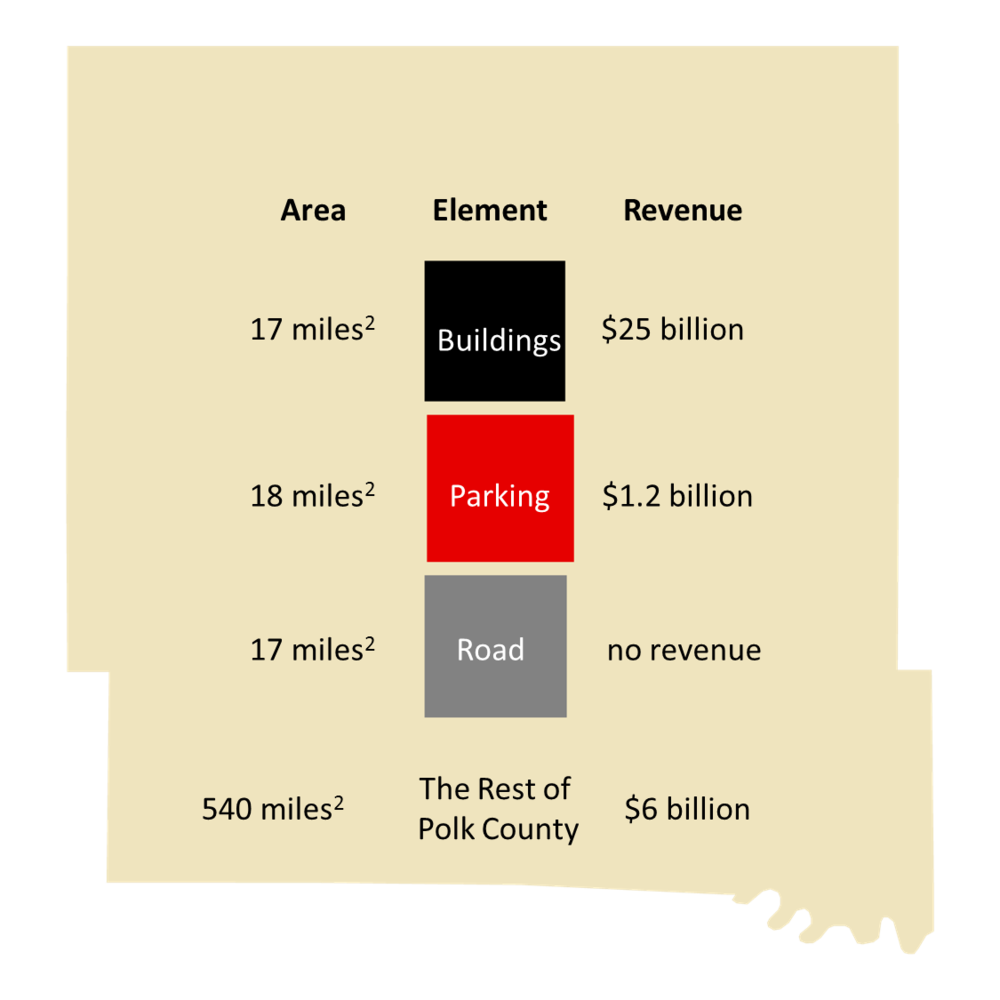
Parking is essentially dead weight as far as tax production is concerned. That 18 square miles of parking is worth about 1.2 billion dollars on the tax rolls or 4% of the total $35 billion value. Parking produces about the same amount of taxes as similarly sized forests, vacant lots, or corn fields. Buildings, as a whole, account for $25 billion of that value or 78%. It’s the buildings that drive tax production. As we have seen in the 3D model, tax production is not uniform. What accounts for variation, what explains the sharp contrast between compact and expansive development is the extent to which we load development with more building and less pavement.
Making Soleri Cry
To put these numbers in perspective join me for a thought experiment. What if we combined all of these various elements into a gigantic single development as those representative blobs suggest? If we were to merge all of the buildings, roads, and parking together what would the relative proportions of these elements tell us about American cities? If you replicate a pattern enough times, in this case about 150,000 times, you end up with a dominant prototype. Very few properties in the original model were mostly blue while many were mostly red. As we have seen, the overall result is a neutral white.
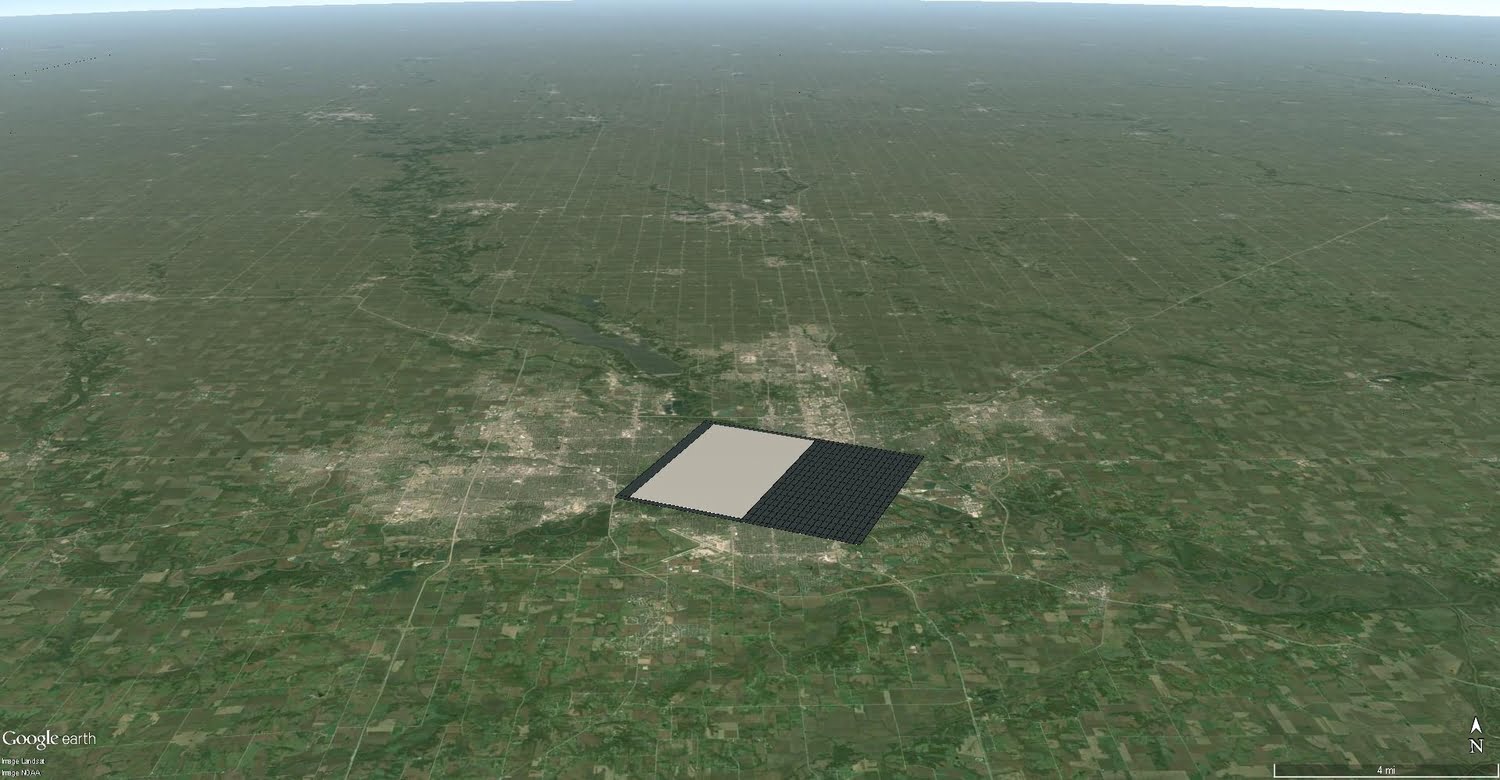
If we reorganized Des Moines along the lines of the Costco City from Idiocracy, it would be a single building about 4 miles square. Around that would be our 18 square miles of parking lot. Of course since everyone lives in the same building it’s a little unclear who will use the outer million or so of those spaces.

At least they’d be easily accessible with 17 square miles worth of road network. That’d be enough to service all of the parking lots and connect to all neighbors with 850 miles of 100 foot wide roads.
This would lead to some other odd consequences. In terms of density our Costco City would be as dense as Boston if we included just the building and parking. If we crammed together all of the buildings with all of their inhabitants in Polk County into a single massive building it would have the same density as New York City. For good measure, here’s our Costco City placed next to New York at scale.
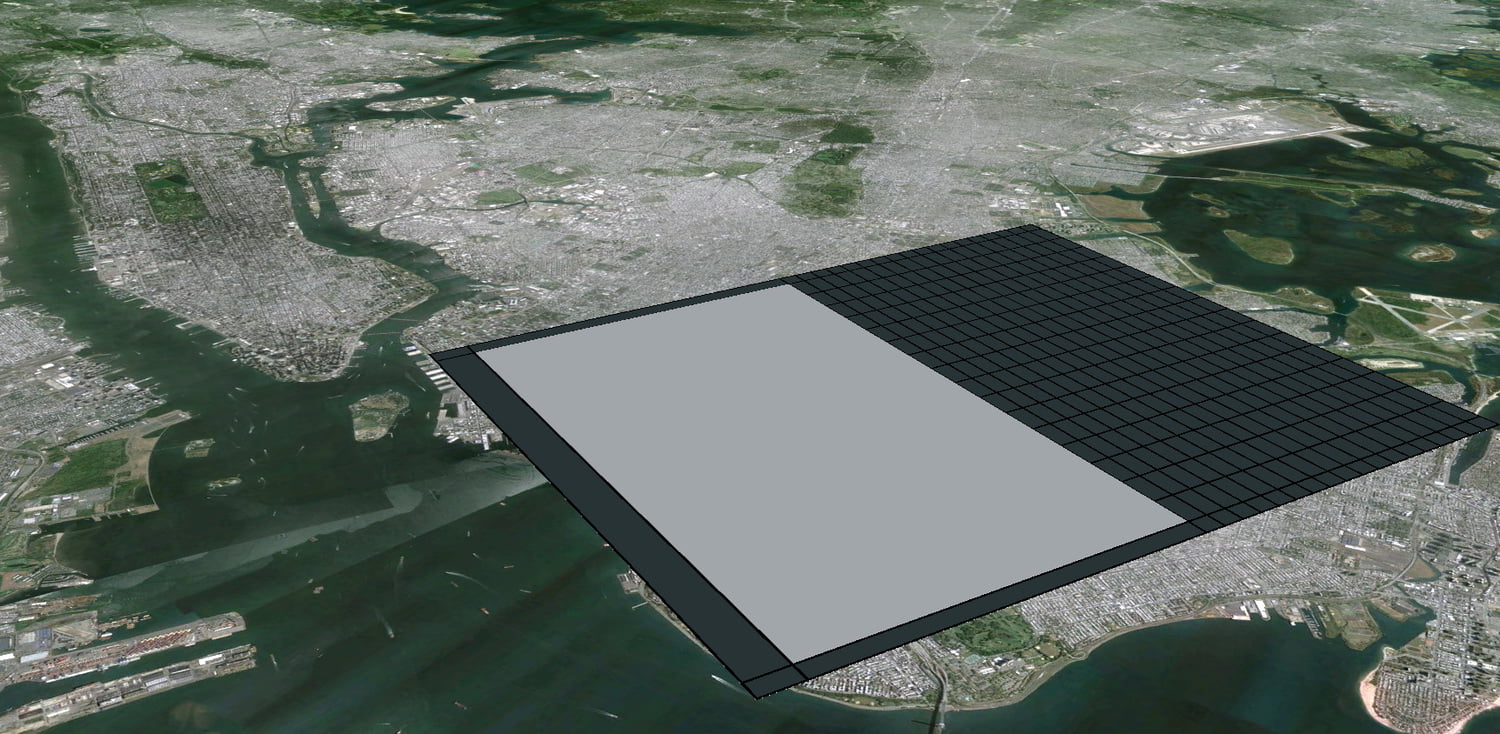
Realistically though, with all of the human activity concentrated in one place I doubt the vast ring of pavement would be necessary or desirable. I suspect our Costo-Arcololgy dwellers might begin yearning for nature and balk at the immense cost of maintaining this useless burden. Ultimately I’m not sure if this would be more puzzling or less to the outside alien observer but I think Douglas Adams would approve of the experiment.
Math aside, parking lots are basically the most inhospitably noxious environments on the planet. Does it really seem reasonable to fill over half our cities with them?